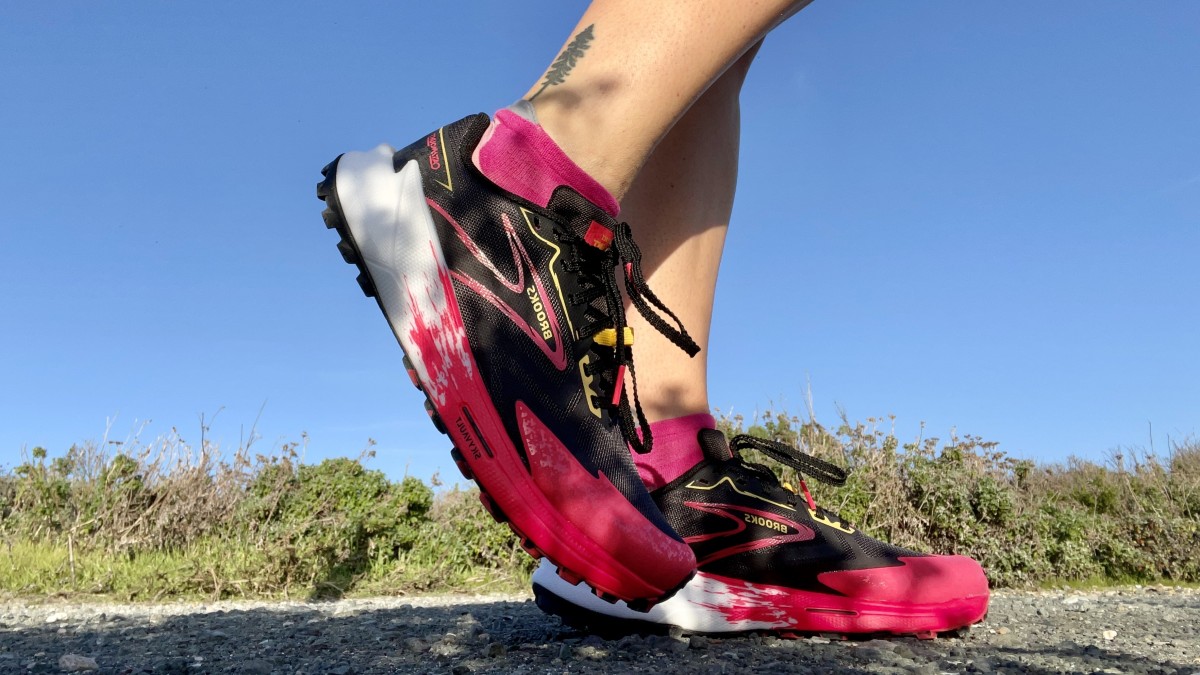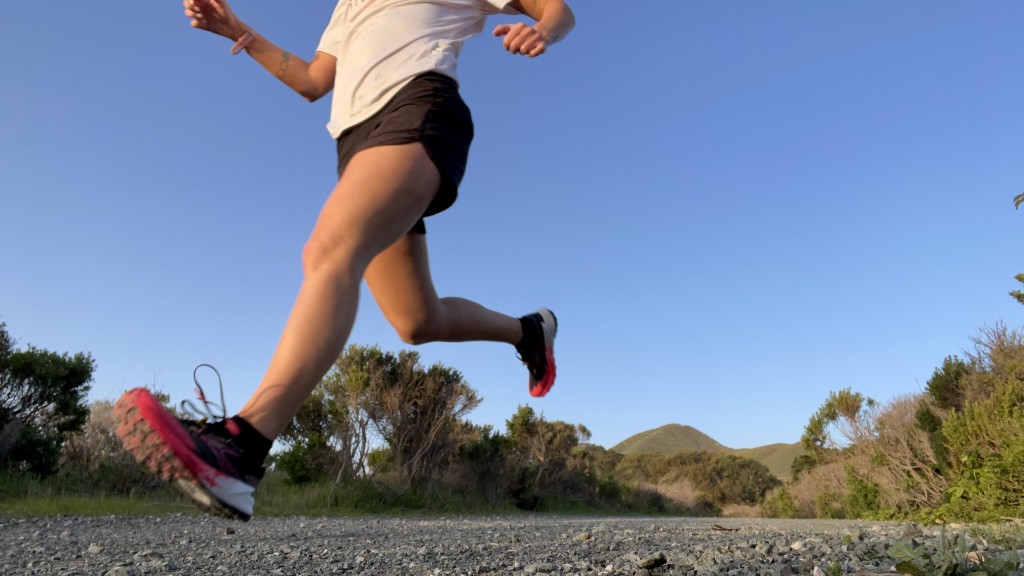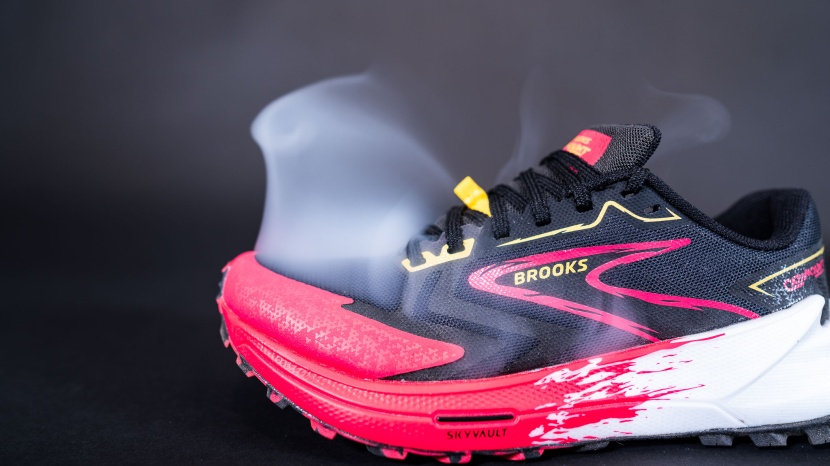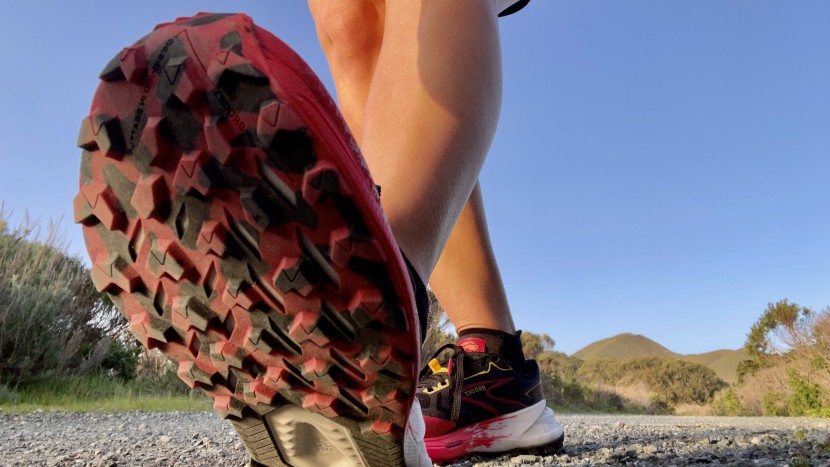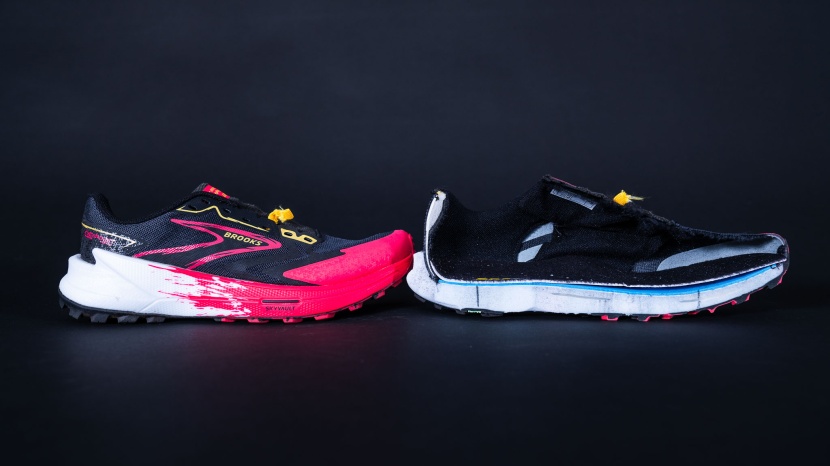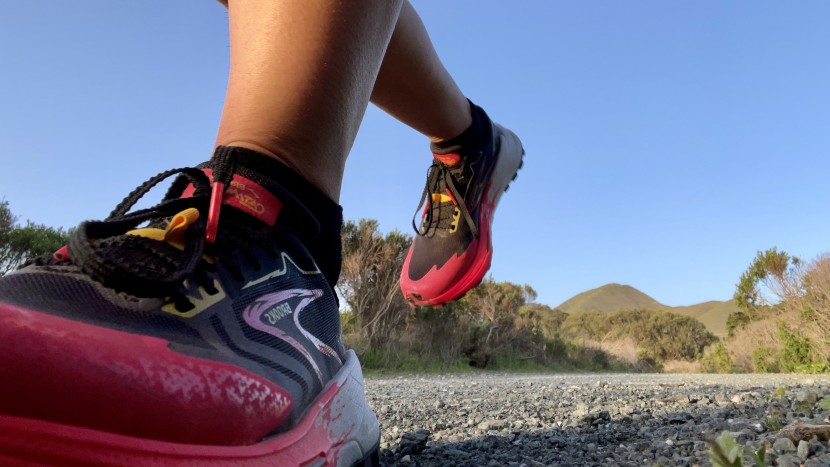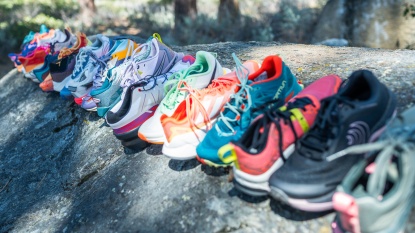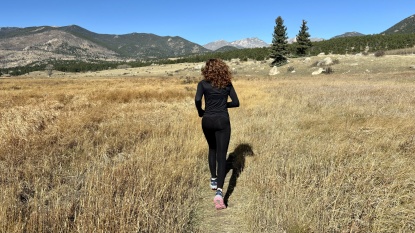
Our Verdict
Our Analysis and Test Results
With an 8 mm drop, TrailTack rubber outsole, and a propulsive underfoot plate, the Catamount 3 provides everything a trail runner needs to tackle moderate trails with confidence.
Foot Protection
The underfoot SkyVault plate of the Catamount 3 feels more propulsive than protective, especially when compared to prior versions and other trail shoes on the market today. Even still, this plate and its 28 mm heel stack come together to create a shoe equipped for moderate to mildly technical trails. Is this a shoe we recommend for scaling vertical granite faces? No. But is this a shoe that provides trail versatility, comfort, and a bit of responsiveness? Big yes. The rubber toe cap provides physical protection and does not feel intrusive on the inside, making it one of of favorites that we have tested to date. The Catamount didn't perform super well when it came to shedding water and mud after being saturated, but it was one of the warmer trail shoes we tested, making it slightly more appropriate for cooler weather than other options.
Traction
The lugs that adorn the outsole of the Catamount 3 are 3.18 mm deep, on the spectrum's shorter end. The Catamount is plenty capable, but we have found that lugs of this depth perform best on moderate terrain; this is not the shoe to wear on a steep, muddy adventure. With multidirectional points on each lug, a bit of outsole flexibility, and a solid amount of grip, the Catamount is versatile for single tracks, fire roads, and other similar terrain types. Its fit and outsole type work well for agility-focused trail running, making it a great choice for short, speedy days on the trail.
Sensitivity
As gear testers, we are consistently seeing that the addition of propulsive plates cuts down a shoe's sensitivity rating. We found this to be true in the case of the updated Catamount. While this version of the shoe offers leagues more underfoot flexibility and sensation than prior models, it still does not provide a great deal of trail information. With a total heel stack of 28mm and a plate, we think that Brooks could engineer this for a bit more trail feel. While not a prim sensitivity shoe, if your running goals center around speed combined with underfoot comfort, the Catamount 3 hits the mark.
Stability
The somewhat rigid nature of the sidewalls coupled with its 8 mm drop (Brooks claims 6 mm, but we measured it at 8 mm) help make the Catamount 3 a stable trail shoe. Not only is the Catamount stable, but its narrower-than-many fit secures the rear foot, providing agility along with its stability. Brooks created the Catamount as a neutral shoe, and that is very much how it feels. It lacks additional structures and supports and instead relies on its well-engineered mesh upper for security. For neutral and peppy efforts with a lot of quick directional changes, this shoe inhibits extra movement, making it a stable choice for trail running.
Comfort and Fit
With each update to the Catamount, it improves. The third iteration of the Catamount combines firmness and coziness to cater to more diverse preferences than previous versions. For runners seeking cushioned support without the bulk typical of maximalist trail shoes, it presents an excellent choice. Its cushioned heel collar and tongue provide comfort, yet the shoe's interior maintains a denser feel, preventing a spongy sensation underfoot. This rigidity adds to its responsiveness, which is why it comes highly recommended (by us) for race day. The tongue, affixed to the insole via elastic- sock liners, remains securely in position during runs. The midfoot is moderately narrow, though less so than prior models, and the toe box follows suit. The engineered mesh upper gradually conforms to the foot's shape after several runs, enhancing the sense of spaciousness and overall comfort.
Weight
The Brooks Catamount 3 dropped a bit of weight this time around, tipping the scales at 7.19 ounces per women's size 6.5 shoe. As with previous versions, the weight-to-protection ratio is spot on. While not the most equipped shoe on the market, it is a highly capable trail runner that will meet the needs of most runners. If you want to try a shoe that is on the lighter side but offers plenty of protection and traction, this is our go-to choice.
Should You Buy the Brooks Catamount 3?
The Catamount 3 is an awesome shoe, period. That does not mean that it will suit everyone's needs and budget. The firmness of the interior with the modest cushioning might be too rigid for some runners' preferences, and the traction might not be burly enough for others. If you are looking for a trail shoe with propulsive capabilities, the Catamount 3 is a solid bet when it comes to comfort and agility.
What Other Trail Running Shoes Should You Consider?
If the speed-related elements are what has drawn you to the Catamountbut you don't feel confident that it is the right choice, there are a few other speed demons on the market that might better appeal to your preferences. First, the Hoka Tecton X 2 is a slightly lighter, slightly less protective, but otherwise minorly higher-scoring speed shoe built for trails. The Salomon Pulsar Trail Pro 2. The Pulsar Trail slightly outscored the Catamount in terms of sensitivity and stability but is a pretty comparable shoe overall. The Pulsar Trail lacks the rigidity of the Catamount, making it a more appealing choice for runners seeking that feature in their trail shoes.


